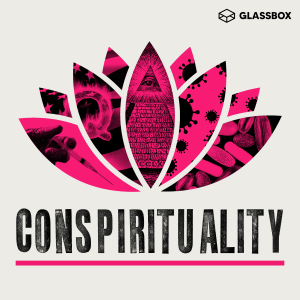
Six chapters on approaches to prospirituality, now that we know (or think we know) what the hell conspirtuality is. This is a long episode, but there are evenly-placed breaks for you all to pause on!
Chapter 1: Positions
After 4 years, we’ve come to a natural question at the end of defining the problem of conspirituality. How do we orient ourselves towards possible answers?
Chapter 2: The Prospirituality Challenge
If you’re clear on how spirituality—including beliefs in the supernatural—can be medicine, you can be clearer on where it becomes poison.
Chapter 3: I did not expect to be friends with Joseph Baker
I never thought I would be friends with a student of A Course in Miracles: maybe my judgments about its inevitably bad impacts are misplaced. Also: it’s not a good idea to dismiss anyone on the basis of religious belief if you don’t know how that belief actually operates, and you won’t unless you talk to them.
Chapter 4: Buddhist Tolerance, Buddhist Repair
Conspirituality is right at home within high-demand groups or cults. Paranoid and controlling social structures feed on paranoid and dissociative emotions and ideas. For members and observers alike, it can become difficult to tell whether the content of the religious group is intrinsic to its cruelty, or whether these can be separated. Surprisingly, some high-demand groups can foster reforms from within, with members reframing the very concepts that had been weaponized against them to liberate themselves. In that sense, the doctrines and beliefs can be part of the problem, but also part of the solution.
Chapter 5: Eve Sedgwick
Cynicism about religion is an occupational hazard of this beat. It’s also popular. At times it’s worth questioning the critical economy focused more on deconstruction than on generating ideas and solidarity.
Chapter 6: The Trouble and Joy of Belief and Silence
“You will know them by their fruits. Do we gather grapes from thornbushes or figs from thistles?”
Matthew 7:16
Show Notes
Charter for the Protection of Children and Young People
Survivors of an International Buddhist Cult Share Their Stories
Paranoid Reading, Reparative Reading
Baylor Religion Survey: 3 graphs
On the Relation Between Religiosity and the Endorsement of Conspiracy Theories: The Role of Political Orientation
Anxious attachment and belief in conspiracy theories
There are higher levels of conspiracy beliefs in more corrupt countries
The impact of economic inequality on conspiracy beliefs
To trust or not to trust in the thrall of the COVID-19 pandemic: Conspiracy endorsement and the role of adverse childhood experiences, epistemic trust, and personality functioning
Learn more about your ad choices. Visit megaphone.fm/adchoices
More Episodes
 2024-10-31
2024-10-31
 2024-10-28
2024-10-28
 2024-10-24
2024-10-24
 2024-10-21
2024-10-21
 2024-10-19
2024-10-19
 2024-10-17
2024-10-17
 2024-10-10
2024-10-10
 2024-10-05
2024-10-05
 2024-10-03
2024-10-03
 2024-10-01
2024-10-01
 2024-09-30
2024-09-30
 2024-09-28
2024-09-28
 2024-09-26
2024-09-26
 2024-09-23
2024-09-23
Create your
podcast in
minutes
- Full-featured podcast site
- Unlimited storage and bandwidth
- Comprehensive podcast stats
- Distribute to Apple Podcasts, Spotify, and more
- Make money with your podcast
It is Free
- Privacy Policy
- Cookie Policy
- Terms of Use
- Consent Preferences
- Copyright © 2015-2024 Podbean.com





